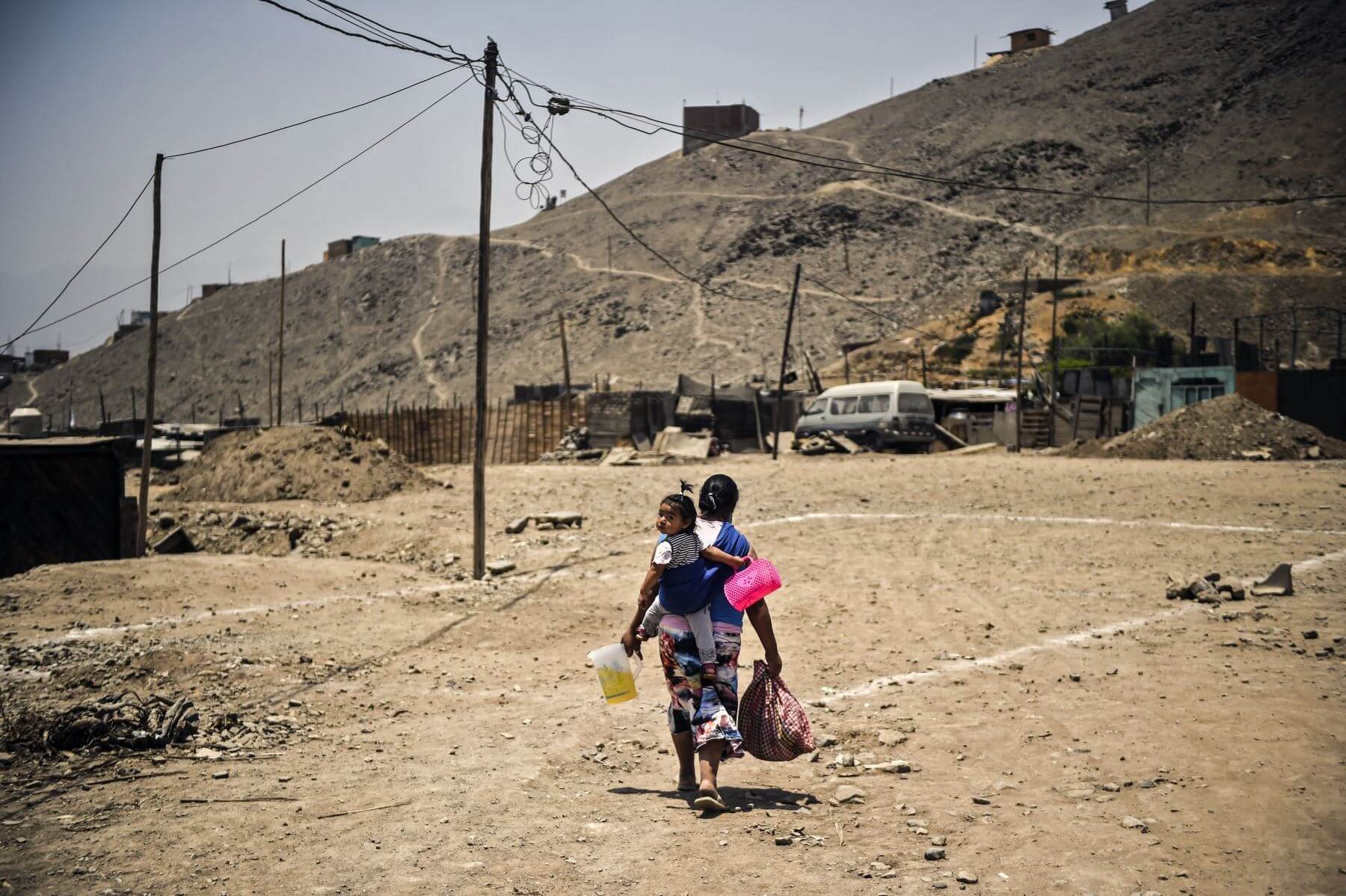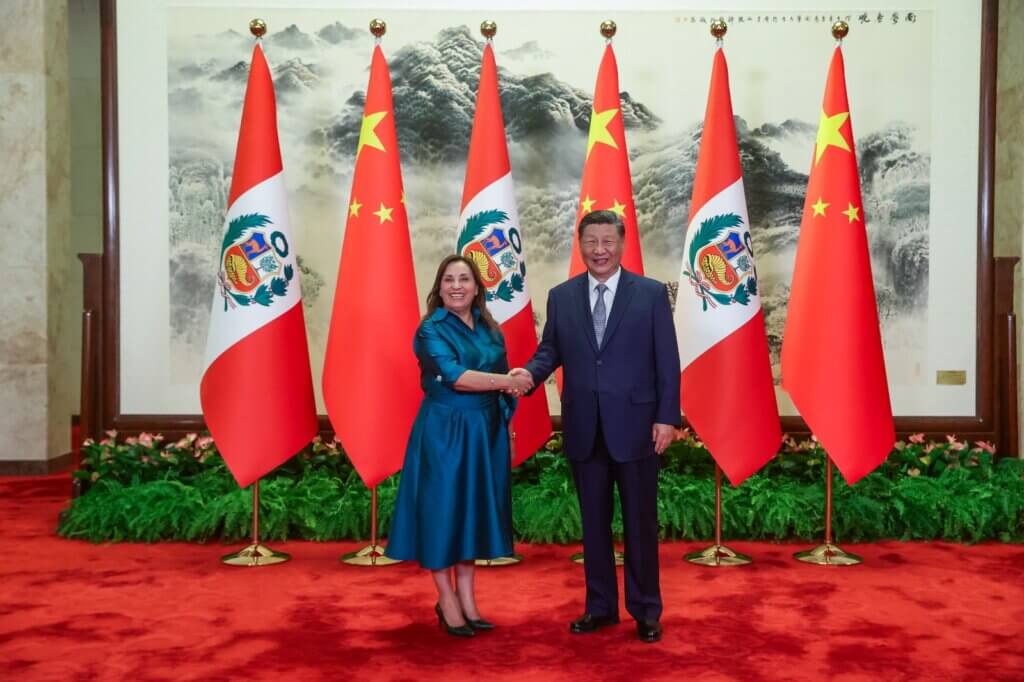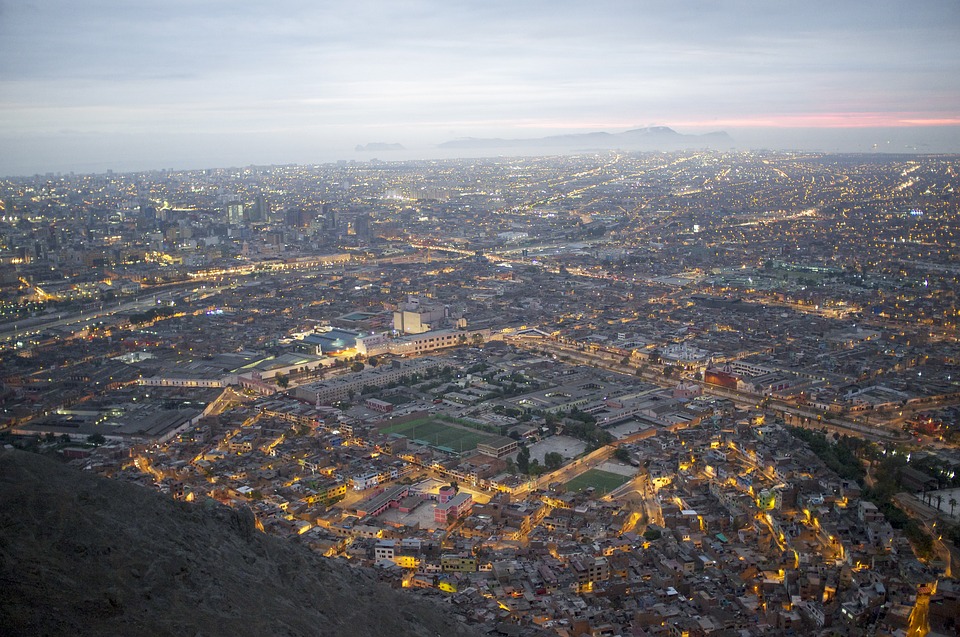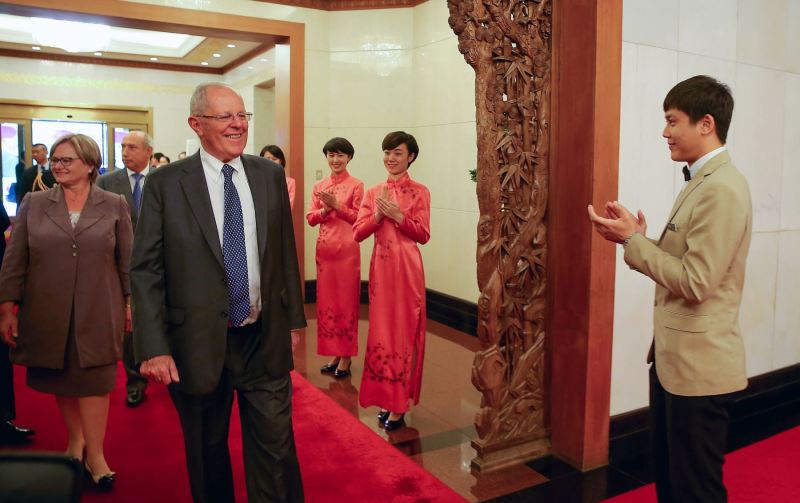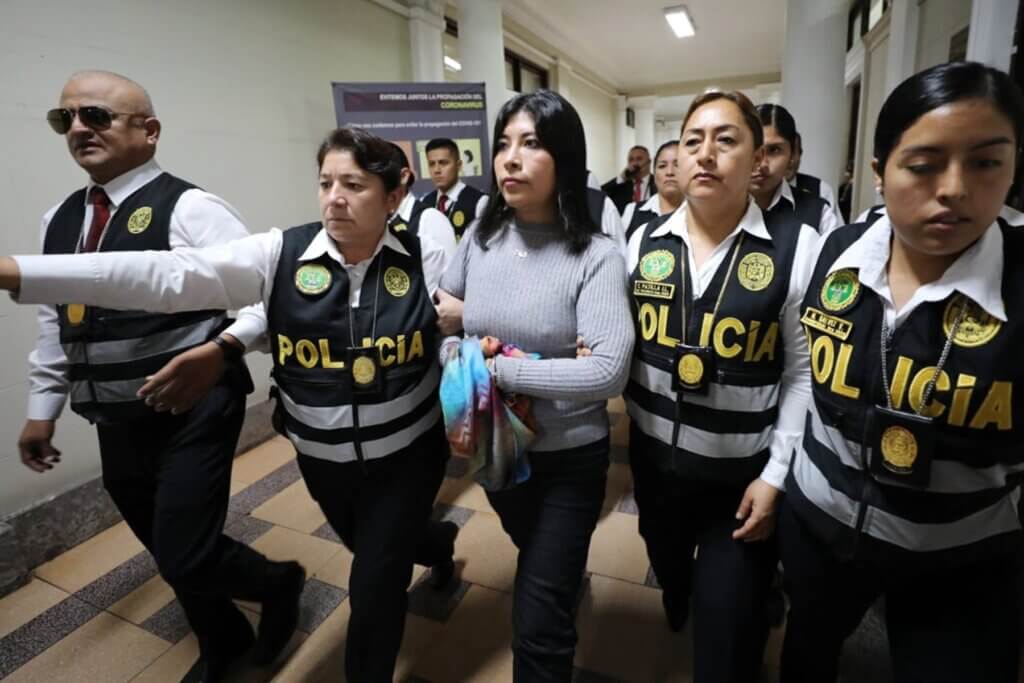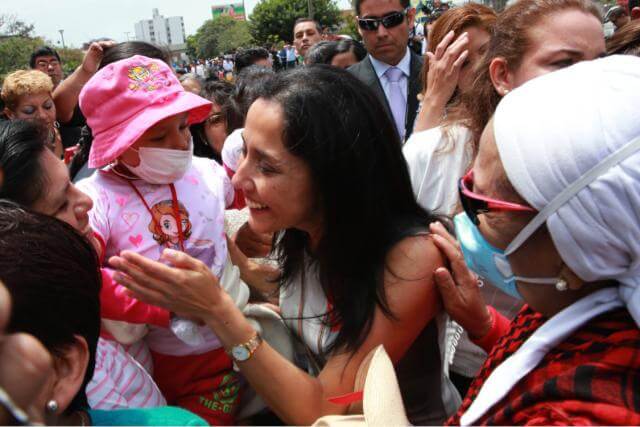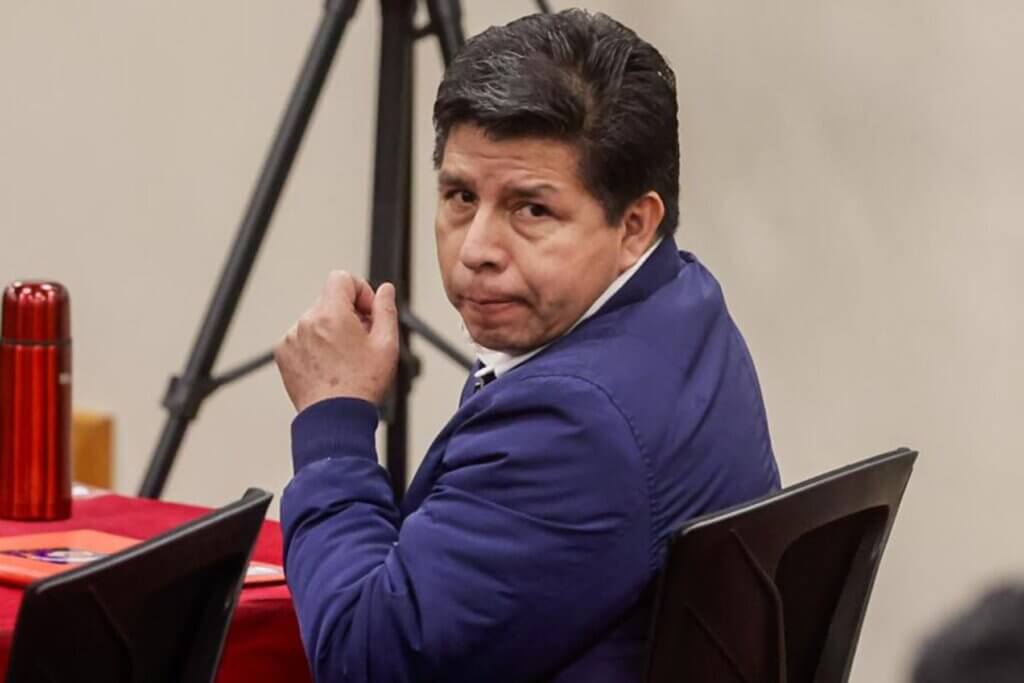Lima, Peru — A technical report released last month from the National Institute of Statistics and Informatics (INEI) revealed that over half a million Peruvians have fallen into poverty in just one year, affecting one in three people in 2023.
Carlos Parodi, a senior professor in the academic department of economics at the University of the Pacific (UP), shared his analysis with Peru Reports on the rise in poverty during President Dina Boluarte’s administration. This increase occurs in the context of an economic recession, characterized by a political crisis and weakened democracy.
According to the professor, one of the main reasons for the increase in poverty is the decrease in per capita spending, political instability, and weak institutions in Peru.
What does the poverty report say?
The technical report “Peru: Evolution of Monetary Poverty 2014-2023” by the INEI shows that 9,780,000 Peruvians (29%) are poor: over half a million people fell into this condition in just one year. This is the highest percentage recorded since the pandemic, as in 2020, 30.1% of the country’s population was in poverty.
This represents a 1.5% increase from the previous year, and, more significantly, an 8.8% increase from the pre-pandemic situation in 2019. These figures mean that for nearly a third of the country’s population, it is impossible to cover with their income the basic basket, which includes food and other goods and services.
Additionally, another group comprising 31.4% of Peruvians is in a state of monetary vulnerability. “What does it mean to be vulnerable? It’s someone who, for example, has a small business and gets robbed, or a flood destroys their business, and they become poor. So, if we add 10 million vulnerable people plus 10 million poor people, we have 20 million Peruvians, out of 33 million, in almost inhumane conditions. Tremendous,” Parodi told Peru Reports.
Another important aspect is the profile of people in poverty. In urban areas, the monetary poverty rate was 26.4%, 2.3% more than the previous year; while in rural areas, it was 39.8%, which meant a decrease of 1.3% compared to 2022.
Of the total citizens living in poverty, 49.7% only accessed primary education, 40.3% secondary education, and only 10% university education; 89.2% have informal jobs. Only 54.2% of poor households have some type of sewage access.
Additionally, the situation of extreme poverty—where the basic food basket is not covered—has also worsened. In 2023, the extreme poverty rate reached its highest point in the last 11 years, with 5.7% of the population, or 1,922,000 people, unable to cover the basic food basket. In 2023, the basket was valued at 251 soles (USD $66.1) per inhabitant per month. The basket is calculated with the cost of 110 foods, 95 of which increased in price in 2023.
Why did poverty increase in 2023?
According to Parodi, one of the main reasons for the increase in poverty is the 10.1% drop in per capita spending between 2019 and 2023. “This means that a person who spent 100 soles in 2019 now spends 89. When you spend less, you buy less.”
Moreover, small businesses, seeing a decrease in people’s spending, “lay off the few employees they have, and the economy begins to shrink,” he said.
Parodi also pointed out that the most obvious problem for the Peruvian economy “is politics and, in general, weak institutions.”
In December 2023, the newspaper El Comercio reported that the Boluarte government closed the year with 100 changes in senior positions in ministries, including the replacement of 22 ministers and 40 vice ministers. Critics argue these constant changes have caused authorities to be unable to focus on such an essential issue as reducing poverty.

According to Dr. José Rodríguez, professor in the Academic Department of Economics at the Pontifical Catholic University of Peru (PUCP) and a member of the INEI poverty measurement advisory committee, the current government is “completely unstable.”
“The high turnover in its staff has meant there is no continuity to get any effective mechanism going. Especially considering that those who enter must learn to manage such a slow apparatus as the State,” he emphasized.
Additionally, the economist said that, given the turbulent political context and the government falling into disrepute, it was difficult for a competent person to want to get involved and be able to implement the appropriate mechanisms.
According to professor Parodi, having authorities in the Executive and Legislative branches with disapproval ratings above 80% does not generate the credibility needed to initiate reforms.
How should Peru address the discouraging poverty figures?
The first task to turn this situation around or start improving it, according to Parodi, is to make the economy grow. “What does it mean to grow? It means producing more. When you produce more, you hire people, you sell more, and the economy starts moving. That is something that is declining in Peru,” he explained.
According to the Peruvian Institute of Economics (IPE), reducing poverty to pre-pandemic levels (20.2% in 2019) requires a favorable environment for private investment, creation of better jobs, and, therefore, higher family incomes.
Thus, in the period 2004-2013, when private investment grew by about 14% annually, the poverty rate was reduced by an average of 4% points each year, added the IPE in May this year.
“The main lesson from the data is something all economists learn in the classroom: without growth, there is no poverty reduction. It is empirical evidence, not a value judgment,” explained Parodi.
The International Monetary Fund (IMF) projected that the Peruvian economy would grow by 2.5% this year and 2.7% in 2025. However, the IPE estimates that even with a growth rate of 3.0% per year, “it would take around two decades to return to the levels recorded before the pandemic.”
“In simple terms, to reduce poverty, the Peruvian economy needs to grow more than 4% annually in a sustained manner. Otherwise, the figures shown by the INEI will hardly change in the coming years,” Parodi said.
The University of the Pacific professor assured that unless there is another period where external demand increases and allows for greater growth, the only option is “to implement reforms to increase productivity and the supply of the economy.”
“This includes education, health, infrastructure, and security, among other sectors that need to be reformed,” he said.
Finally, the IPE pointed out that the persistent political crisis will hinder the recovery of private investment. “To achieve higher growth, more focused policy strategies will be needed to address the sharp increase in urban poverty and improve the coverage and quality of basic services in rural areas,” it concluded in its analysis.


